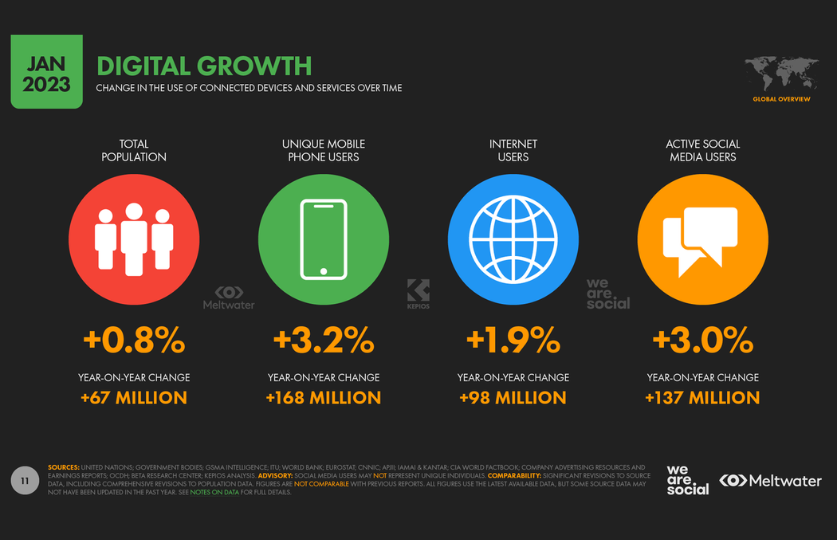At earthware, nothing matters more than staying true to innovation. That’s why we always make sure to stay on top of the very latest developments in digital. So we were very excited to see the new Datareportal findings on the top digital trends for 2023, and after a deep dive into the data, here are our key takeaways.

Internet Usage
Worldwide, digital continues to grow year on year. No surprise, really, especially in this post-Covid era.
Mobile phone usage has increased the most, with 168 million new users over the past year. 68% of the population, 5.44 billion people, now use mobile phones.
There are 5.16 billion internet users in the world today, 64.4% of the population. And by the end of 2023, two thirds of the population are expected to be online.
Social media is also getting a lot of attention. There are now 4.76 billion social media users around the world, just under 60 percent of the total global population. Impressive.
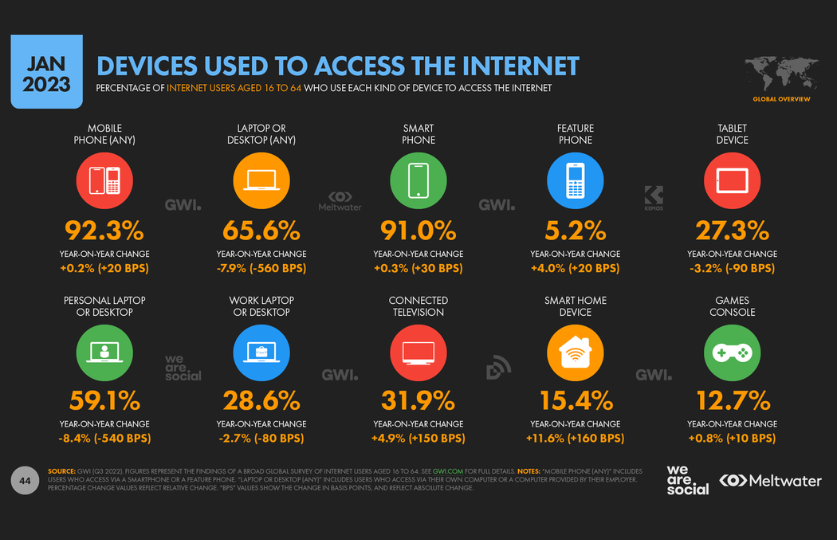
Whilst mobile and smart devices continue to grow, ownership of laptops and tablets has been steadily declining. Today, less than 6 in 10 working-age internet users say that they own a laptop or desktop computer. This confirms what we’ve known for a while – our digital healthcare solutions should be taking a ‘mobile-first’ approach, so we are offering customers the most convenient option. But remember... ‘mobile-first’ doesn’t mean ‘mobile only’.
Social media
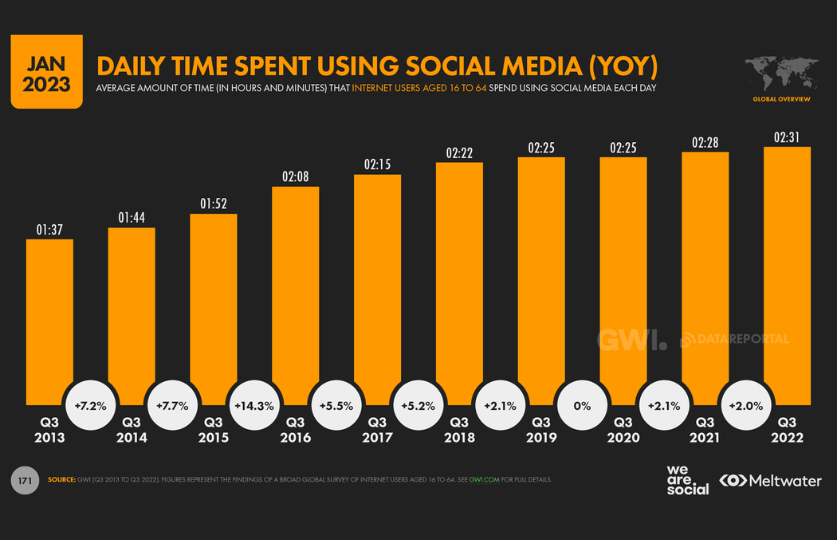
Social media usage is continuing to grow.
A typical working-age internet user now spends more than 2½ hours per day using social media.
Interestingly, this increase has occurred despite a slight decline in overall time spent using the internet. 4 in every 10 minutes spent online is now spent on social media. This is also 30% more time than internet users spend watching “traditional” television.
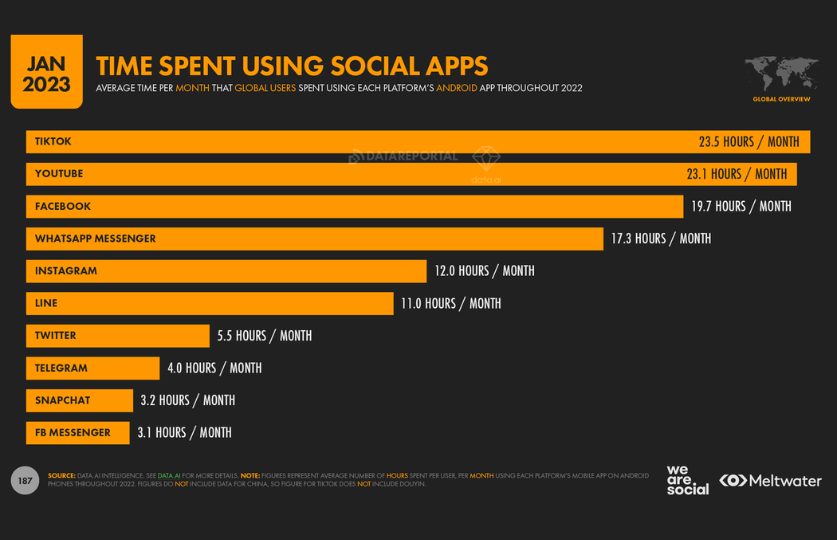
TikTok is still the social platform with the highest average monthly use per user. Users spent an average of almost 23 ½ hours per month using TikTok in 2022, just ahead of YouTube’s 23 hours and 9 minutes.
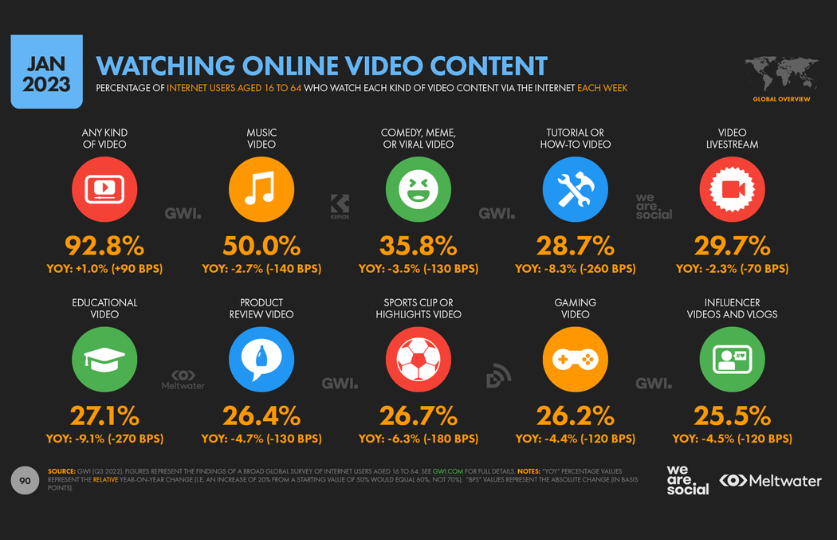
Video
Watching videos is still one of our top online activities.
The overall share of working age internet users who watch online videos each week has increased even more over the past year, from 91.9% in last year’s report, to 92.8% today.
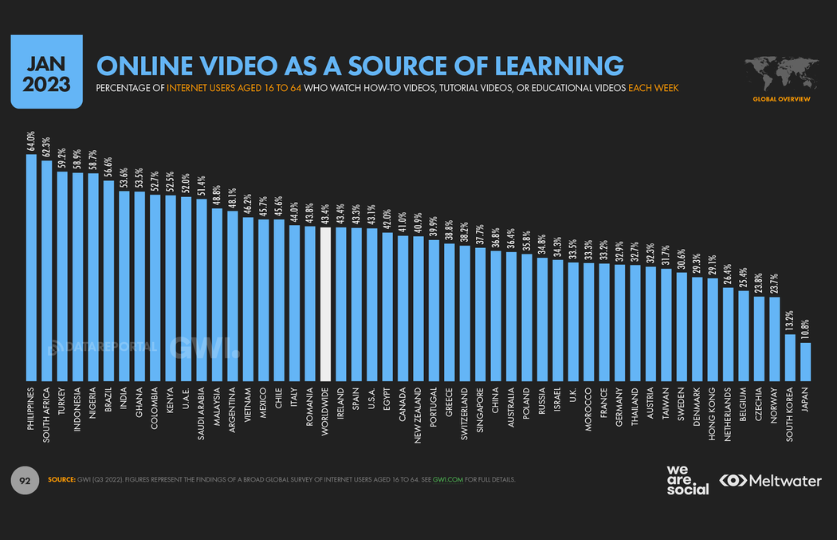
Video can be one of the most effective ways to learn. 43.4 percent of global working age internet users still say that they rely on online video as a source of learning.
Between 2019 and 2021, educational use of the internet at least once a week increased from 27% to 38%, with the biggest increases seen in lower-middle income countries.
Even short form video learning is growing. Data published by TikTok suggests that videos tagged with #LearnOnTikTok have now attracted roughly half a trillion views, ranking it 23rd amongst the platform’s most popular hashtags of all time.
Digital advertising
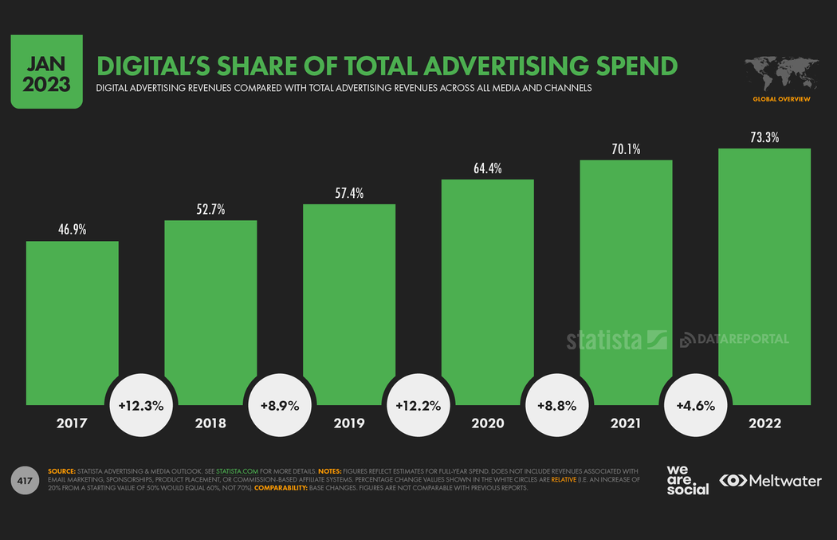
Digital’s share of total global ad spend has increased from 57.4% in 2019 to 73.3% in 2022. In absolute terms, digital ad revenues have jumped by a huge 78% over the past 3 years, from a pre-pandemic total of just under $375 billion in 2019, to more than $667 billion in 2022.
The biggest jump came in 2021. With global digital ad revenues increasing by a third compared with 2020 spend, demonstrating how Covid significantly reshaped advertising, and that the shift to digital is here to stay.
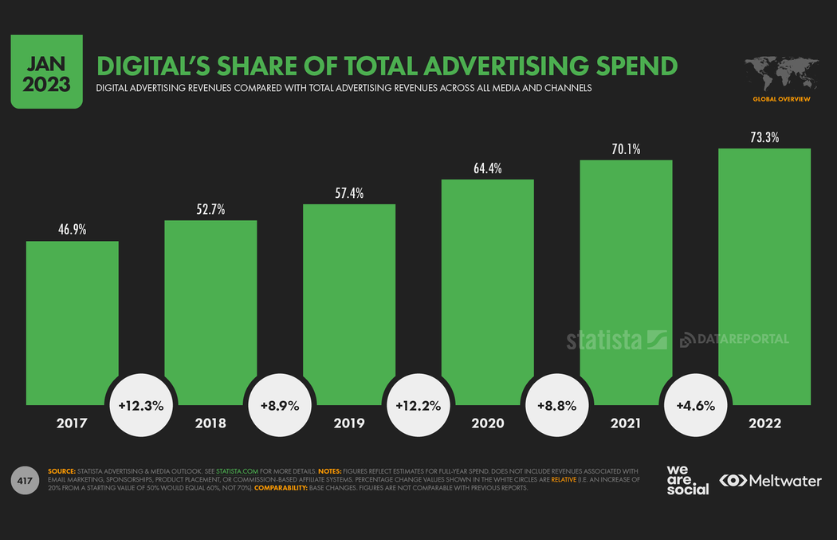
The biggest shift in digital advertising has been in social media. Social media’s share of global digital ad spend has grown from roughly a quarter of the total in 2019, to more than a third in 2022.
The numbers in this report tell a very clear story.
If we want to connect with customers in a meaningful way, we need to make it convenient for them. Digital delivers on this. Whether it’s bite-sized video, social media, or mobile-first learning content, digital captivates attention like no other. So let’s continue to innovate in healthcare with digital solutions.
If you need support putting together a digital first strategy, or are interested in our digital content solutions, drop us a line.


